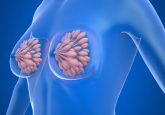Serotonin levels and 1-year mortality in patients with neuroendocrine tumors: a systematic review and meta-analysis

Neuroendocrine tumors (NETs) can lead to the development of carcinoid syndrome that can be associated with increased levels of peripheral serotonin. High peripheral serotonin levels have been implicated in the pathogenesis of carcinoid heart disease (CaHD). However, this study is the first systematic review and meta-analysis to investigate the precise correlation between serotonin’s metabolic product (5-HIAA) and survival in NET patients.
Abstract
Aims: Elevated peripheral serotonin in patients with NETs is implicated in the pathogenesis of heart disease but a quantitative relationship has not been established.
Materials and Methods: Systematic review and meta-analysis of studies assessing 24-hour u5-HIAA and mortality in patients with NETs (2007–2017) with a primary outcome of 1-year mortality risk and 24-hour u5-HIAA.
Results: We identified 1715 records of which 12 studies including 755 patients (3 442 person-years with 376 deaths) were eligible for meta-analysis. Mean u5-HIAA was 149.2 mg/24 hours (SD 96.6) and 1-year mortality was 13%. The meta-regression equation showed an 11.8% (95% CI 8.9%–17%; I2=93.0%) increase in 1-year mortality for every 10-unit increase in u5-HIAA.
Conclusion: Levels of peripheral serotonin measured by its metabolite urinary 5-HIAA is predictive of 1-year all-cause mortality in patients with NETs.





